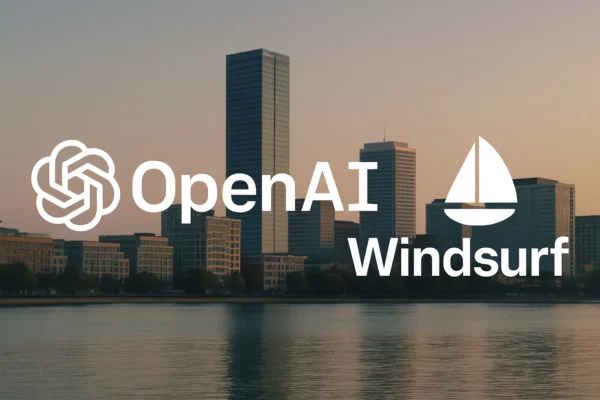
The Automotive Sector continues to be redefined by the recent Artificial Intelligence(AI)-led technological advancements. The advent of automotive artificial intelligence raises a multitude of questions and elicits concerns about their safety, governance, ethical accountability, and liability. While sustained market maturity has remained a key driver toward these adoptions, the regulatory framework plays its part as a critical enabler for the ecosystem. To address the aforementioned issues and to seamlessly create an integration mechanism for such technological developments into social norms, nations, and policymakers are establishing frameworks.
Let us explore those frameworks.
United States:
The United States has taken a decentralized approach to regulating automotive AI. The federal guidelines co-exist with state guidelines. Such a dual structure allows for synergies in innovation and a complex ecosystem that creates compliance across multiple jurisdictions.
Regulatory Bodies and Frameworks:
National Highway Traffic Safety Administration(NHSTA):
- The NHSTA oversees vehicle safety and shapes policies on Automated Driving Systems(ADS).
- The NHSTA has a framework of ADS 2.0. This framework motivates manufacturers to submit Safety Assessment Letters, that detail their AI systems’ safety measures and performance criteria.
- Manufacturers are required to report testing data, including system disengagements, to promote transparency and accountability during autonomous systems trials.
State-Level Regulations:
- California has emerged as a leader in autonomous vehicle regulations. They require permits for testing autonomous vehicles on public roads. Companies are required to provide detailed reports on safety incidents and vehicular performance.
- Besides California, the regulatory scenario across other states is unstructured.
European Union(EU):
The EU AI Act:
The European AI Act came into force on August 1, 2024. This act aims to foster responsible artificial intelligence development and deployment in the EU. The act introduces a uniform framework across all EU countries through a risk-based approach.
- Minimal Risk: Most AI systems such as spam filters, and AI-enabled games face no obligation. Firms can voluntarily adopt additional codes of conduct.
- Specific Transparency Risk: Chatbots and Interactions that involve a Human Machine Interface(HMI) need to inform users that they are interacting with a machine.
- High Risk: Applications such as AI-based medical software or AI-based recruitment software must strictly comply with requirements such as risk mitigation systems, quality of training datasets, clear user information, and human oversight.
- Unacceptable Risk: AI systems that allow “Social Scoring” by governments or private companies are banned owing to their evasive nature and transgression of fundamental rights.
Based on the above risk-oriented approach, strict requirements are imposed on AI applications in vehicles.
- Rigorous Testing: Comprehensive Testing to ensure Reliability and Safety under varied ambient conditions.
- Robust Data Governance Measures
- Transparency: Manufacturers need to disclose operational aspects of AI along with clear documentation for end-users and regulators.
- Human Oversight: High-risk AI applications must have provisions for human intervention to override system decisions.
Implementation Timeline:
- February 2, 2025: Prohibitions on Unacceptable Risk AI systems will take effect.
- August 2, 2025: General-purpose AI models must comply with new rules, and member states will appoint competent authorities to oversee the implementation
- February 2, 2026: Introduction of Post-market monitoring requirements to ensure continuous compliance after deployment
- August 2, 2026: Obligations for high-risk AI systems, mostly applications in Autonomous vehicles.
- August 2, 2027: Additional obligations for high-risk systems defined in the harmonized EU legislation.
The EU Act sets a global benchmark for regulating AI in high-risk applications. It details a clear roadmap for the responsible integration of AI in the Automotive Industry.
Japan:
Japan has adopted a Collaborative Regulatory Approach, that envisages close cooperation between governments and industry stakeholders. The Japanese regulatory philosophy balances safety and progressive innovation. Instead of rigidity in enforcement, the government encourages voluntary compliance with guidelines. This approach fosters a faster innovation cycle that will reduce time to market and build trust among multiple stakeholders, including consumers.
Safety-centric guidelines for autonomous driving technologies have been introduced.
- Vehicle Testing under real-life conditions
- Ensuring system reliability and minimizing risks
- Fail-safe mechanisms for handling unexpected scenarios
Japan has also set an ambitious target of achieving full autonomy(Level 4 and above) by 2025.
China:
China stands as the leader in shaping robust regulatory frameworks for automotive AI. The Chinese framework addresses multiple aspects like Safety, Data Compliance, and Operational standards ensuring a blend of structure along with dynamism. Chinese regulatory philosophy is based on central oversight with support for innovation.
Key Regulations:
Standards for Autonomous Driving:
- National Standards for Autonomous Driving: Introduced in 2021, this defined 5 levels of autonomous driving(L0 to L5) standards aligned with global benchmarks.
- These standards guide manufacturers in classifying and developing autonomous vehicles ensuring adherence to performance metrics.
- These standards were officially implemented on March 1, 2022, and provided a clear framework for automotive manufacturers to follow.
Cybersecurity Law:
- Implemented in 2017, the law requires companies to safeguard user data against unauthorized access.
- Sensitive Automotive data like diagnostics and user information must be stored in China locally.
Data Security Law:
- Effective in 2021, this law establishes protocols for data handling, storage, and sharing.
- This law emphasizes stringent oversight for data exported outside of China to protect national security and user privacy.
Transport Ministry Safety Guidelines:
Stringent safety requirements have been outlined for Public Transport and Logistics carriers. Autonomous Buses and shuttles must meet strict safety benchmarks. Logistics carriers, on the other hand, must comply with route safety, load stability, and traffic compliance.
The regulatory frameworks that impact the development, maturity, and adoption of automotive AI across the Triad markets and China are tailored to local contexts. A lot of these frameworks need to be harmonized for a smoother transition in the broader automotive industry and to avoid barriers for firms that cater to global markets. At the outset, it seems a significant level of harmonization of rules and unification of frameworks can be expected with the arrival of “Landmark AI Safety Treaty” signed on September 5, 2024.






